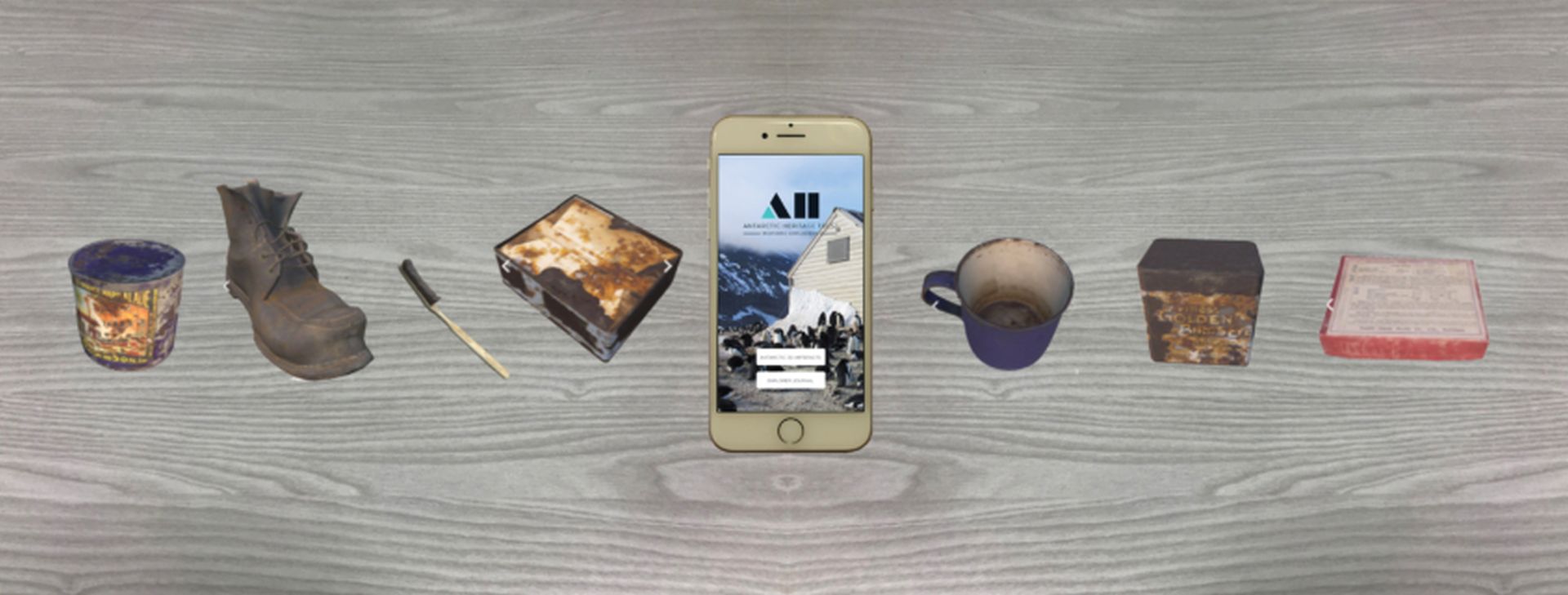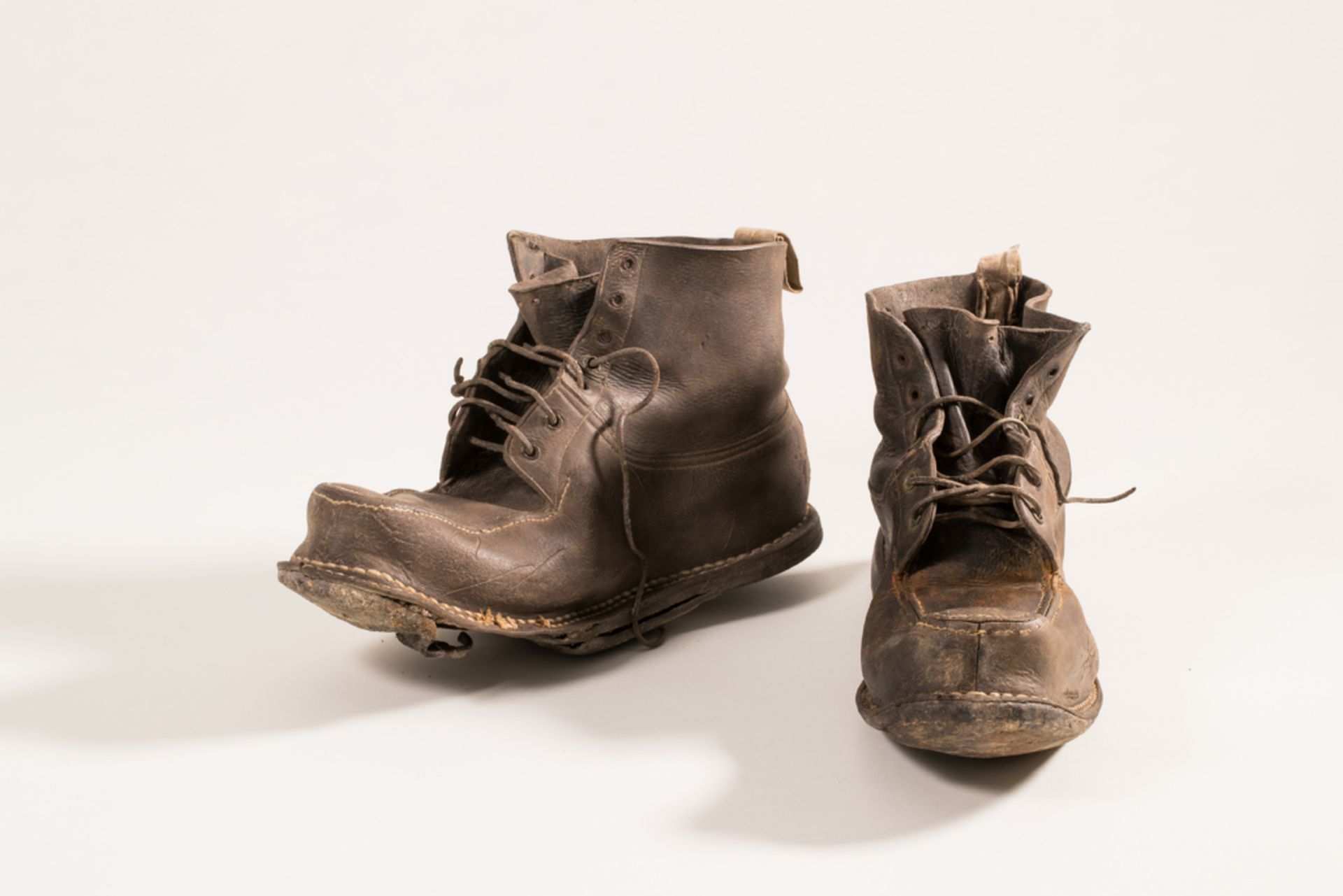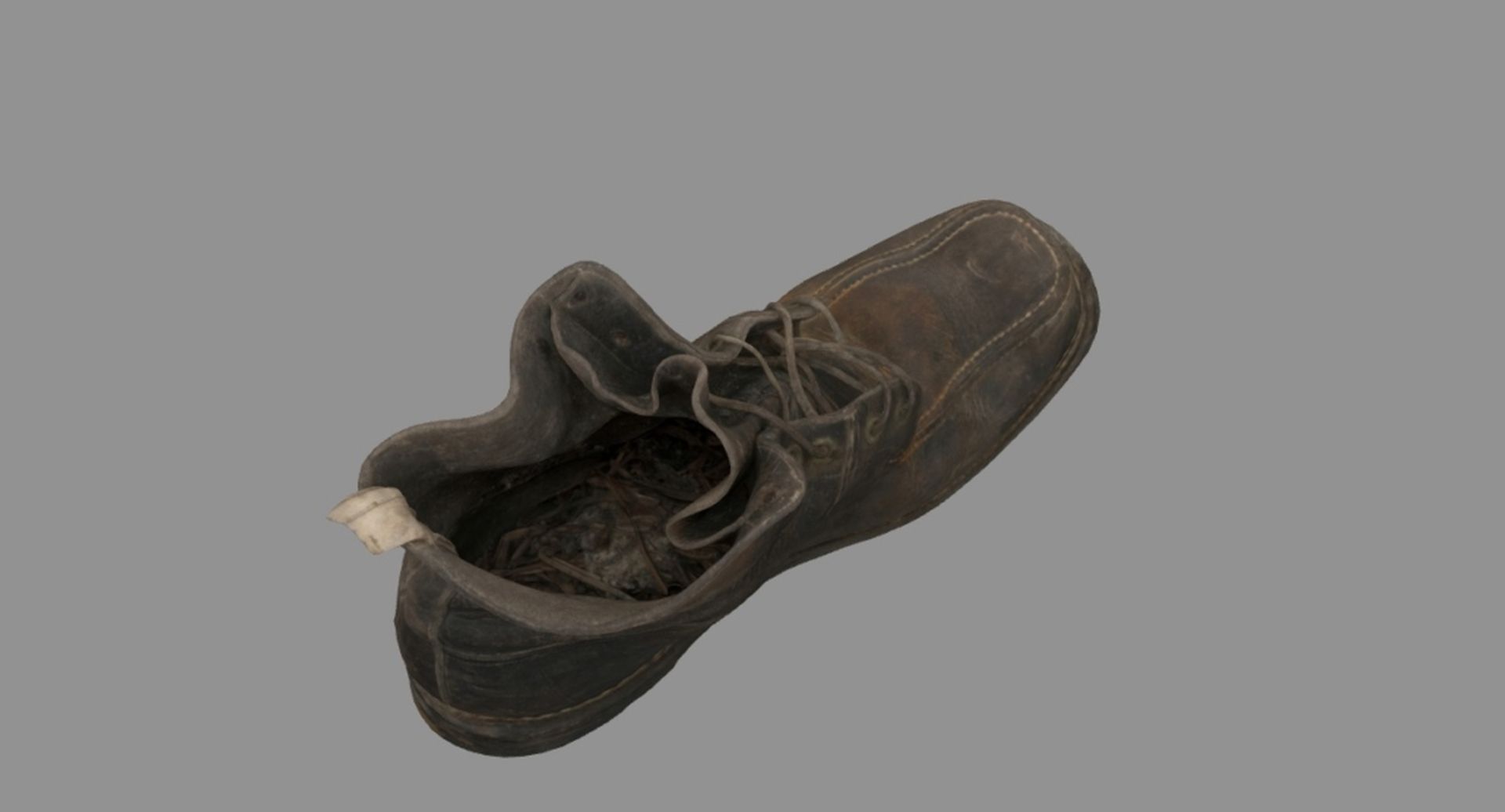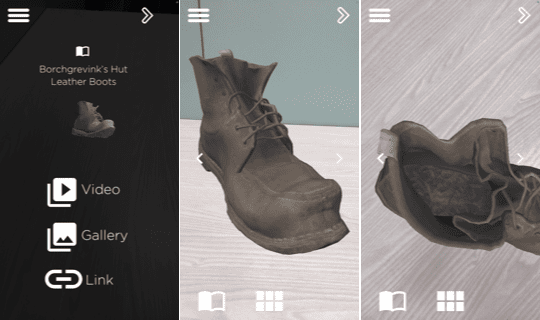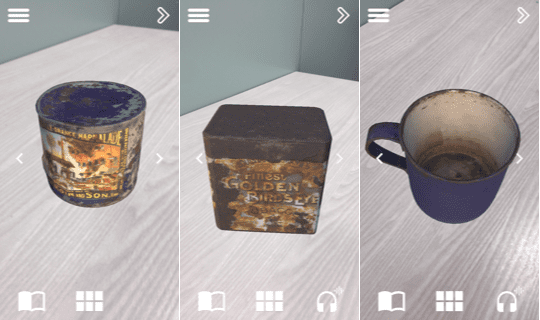Bringing the Past to Life
In this blog, we look at how world-leading technology in the Trust’s new augmented reality (AR) app is bringing historic artefacts from the Antarctic to life in a thoroughly modern way.
Ever wanted to inspect the world’s most famous fruitcake up close, or see if your shoe size matches a historic Antarctic explorer’s 120-year-old leather boot? With the exciting and unique Antarctic 3D artefacts experience, you can do just that.
This aspect of the Antarctic Heritage Trust’s digital augmented reality (AR) app enables users to look through their smart devices and view a curated collection of seven everyday items used at the remote Antarctic peninsula of Cape Adare by members of Carsten Borchgrevink’s Southern Cross expedition in 1899 and the Northern Party of Robert Falcon Scott’s Terra Nova expedition in 1911.
Users can project a 3D rendering of each artefact onto a surface in front of them, which they can rotate, and view from all angles at high resolution, giving them an up close and personal experience with objects usually out of reach for most people given how inaccessible these sites are, being in Antarctica, says General Manager Operations and Communications, Francesca Eathorne.
“Using the app is a fun and immersive way for people to learn more about historic artefacts from Antarctica, gain an insight into what day to day life was like for the early explorers, and learn about the Trust’s conservation work on the first buildings on the continent.”
Members of Scott’s team are likely to have left behind the whole Huntly and Palmers’ fruitcake that made international headlines when it was discovered by the Trust in 2016. Although its tin was badly corroded, conservators said the fruitcake, then 106-years old, was perfectly preserved, and looked and smelled almost edible. The fruitcake was among around 1500 artefacts that the Trust conserved from the two huts at Cape Adare, the only remaining examples of humanity’s first buildings on any continent.
After being retrieved from Cape Adare under a government permit in 2016, these significant artefacts were temporarily brought back to Christchurch, New Zealand by the Trust where they were conserved by its international team of experts at Canterbury Museum. Following this work, imager Tim Handfield and 3D renderer Trevor Coates used a specialist photogrammetry process to capture the fruitcake and a handful of other artefacts including an enamel mug, toothbrush, and leather boot, then create the incredibly lifelike 3D images that feature on the app.
Staples VR who partnered with the Trust on this project used their expert digital skills to build a unique and complex AR app, one of only a few of its kind in the world showcasing cultural heritage.
Tech-savvy students at a Christchurch primary school where the AR app was officially launched in 2020, immediately engaged with the technology. They loved seeing the artefacts transported from their historic past into a 21st-century digital object, and quickly found their way around the app. Audio commentary about each of the artefacts provided a greater understanding of their importance in the historic Antarctic environment.
The app shares interesting stories of the early explorers’ expeditions and the Trust’s conservation work at the site today and has lots of bonus Antarctic content such as videos, photo galleries and blogs.
As part of the Trust’s permit to collect and conserve the artefacts, all objects will be returned to Cape Adare. This work has been delayed due to the COVID-19 pandemic, and the difficulties of accessing this remote, harsh site.
How to access the app
The app is available to download for free from Google Play or the App Store.
The application is only available on surface tracking Augmented Reality compatible devices,
visit our store pages on your device to see if your device is compatible

